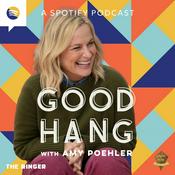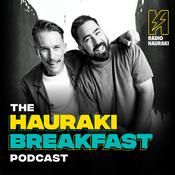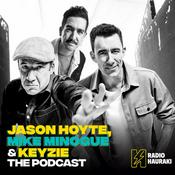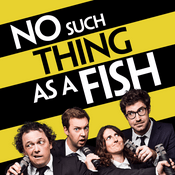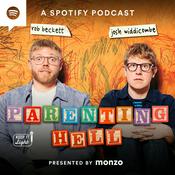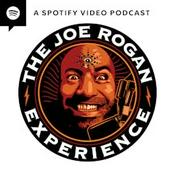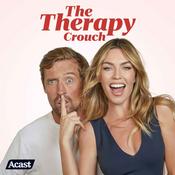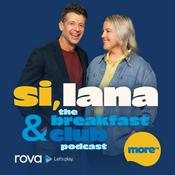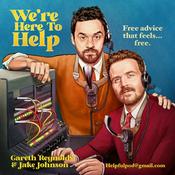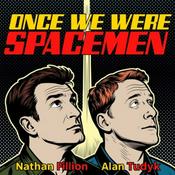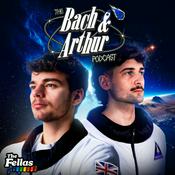Available Episodes
5 of 145
- The Science of Generosity & Holiday Gift GuideGet ready for a strange mix of holiday cheer and fear, this week we’re serving up the science and psychology of generosity with a side of lore (my lore.) Don’t worry, things will be merry and bright… eventually. I’m just joshing, but make sure to check out the links below for sources, ideas, and much more. Hope to see you in the communal shower! Link to my substack: https://substack.com/@sarahschauer Full reading list will be posted tomorrow, Dec. 10, around noon PST - it is simply too long for this caption lol. Resources: Undoing Drugs: How Harm Reduction Is Changing the Future of Drugs and Addition - Maia Szalavitz Most Delicious Poison: The Story of Nature’s Toxins - from Spices to Vices - Noah Whiteman What We Value: The Neuroscience of Choice & Change - Emily Falk Give Well, Feel Great: The Science of Gift Giving and Receiving https://www.templeton.org/news/give-well-feel-great-the-science-of-gift-giving-and-receiving The Psychology Behind Perfect Gift-Giving https://swipegifts.com/blog/gift-psychology Gift Resources & Links: Scientific American’s Best Nonfiction of 2025 https://www.scientificamerican.com/article/scientific-americans-best-nonfiction-of-2025/ The Scientific American Staff’s Favorite Books of 2025 https://www.scientificamerican.com/article/the-scientific-american-staffs-favorite-books-of-2025/ Gifts for every kind of nerd https://www.morningbrew.com/stories/2025/10/24/gift-guide-nerd Craft Club https://www.craftclubco.com/pages/gift-guide?srsltid=AfmBOorxPL2GQZwm70XO8bEjQWQ03oM2MFEh4jgRFMYXqaJrtxXNtnbp Customer Stained Glass Piece https://www.etsy.com/market/custom_stained_glass Custom Vinyl Records https://www.freestyle-vinyl.com/collections Canva Magazines https://www.canva.com/magazines/ Custom Lego Figure https://www.lego.com/en-us/minifigure-factory Fibonacci Wall and Desk Clock https://www.etsy.com/listing/1576771073/fibonacci-wall-and-desk-clock-unusual Gifts for math lovers https://www.mathnasium.com/blog/great-gifts-math-lovers-2024 Educational Subscription Boxes for Kids https://www.cratejoy.com/collections/educational-subscription-boxes STEM Build Boxes https://coolsciencefinds.com/articles/stem-build-boxes Lighting for Lego Sets https://www.lightmybricks.com/blogs/learning-centre Science Art - Scientific Illustration Artworks and Wall Art https://cognitive-surplus.com/collections/wall-art Planet Bath bombs https://www.kiwico.com/us/store/dp/planet-bath-bombs/3205 Custom Star Map from special nights - jewelry, art, etc https://www.thenightsky.com/ They have star map lockets! Library Check Out Card Bookmark - Vintage https://www.etsy.com/listing/1081591959/library-check-out-card-bookmark-vintage Custom Book Embosser https://www.etsy.com/listing/840508076/book-embosser-personalized-custom-ex?ls=s&ga_order=most_relevant&ga_search_type=all&ga_view_type=gallery&ga_search_query=ex%20libris&ref=sr_gallery-1-35&sr_prefetch=1&pro=1&frs=1&pop=1&content_source=5d442138550e8a17059979d09cb92cbabcd17809%3A840508076&search_preloaded_img=1&organic_search_click=1&logging_key=5d442138550e8a17059979d09cb92cbabcd17809:840508076&source=aw&utm_source=affiliate_window&utm_medium=affiliate&utm_campaign=us_location_buyer&utm_content=740219&sv1=affiliate&sv_campaign_id=740219&awc=6220_1764911312_c63edd94bc322514623e5c6d663ea839 Jane Eyre Embroidery Kit https://www.etsy.com/listing/1008531760/jane-eyre-embroidery-kit?ga_order=most_relevant&ga_search_type=all&ga_view_type=gallery&ga_search_query=jane+eyre+embroidery&ref=sr_gallery-1-2&organic_search_click=1&utm_source=affiliate_window&utm_medium=affiliate&utm_campaign=uk_location_buyer&utm_content=1266099&sv1=affiliate&sv_campaign_id=1266099&awc=6091_1764911520_293ebbe0bc58c5494c72236acc01f8ad Learn more about your ad choices. Visit podcastchoices.com/adchoices--------1:14:32
- How to Be More Creative: Abstraction and Improvisation (Part 3)!Here we are, the third and final installment on how to be more creative! What a wild and winding journey it’s been, hopefully everyone is forever changed. Just a reminder: the essence (aka timbre - a unique quality of a sound that distinguishes it from other sounds) of a shower thought is a rambling (divergent) musing while in the shower - an environment where sound and heat are taking ego (fixedness) offline and allowing you to make more fluid connections. Water is also a fluid, which is a substance that can flow and take the shape of it’s container aka your body, your brain - which btw are constantly changing so best to keep a lot of things fluid, moving, lest some solids clog flow. Anywho, I hope you enjoy the neuroscience, the lateral movements, the abstractions, the improv, but most of all… I hope you dance. To the beat of your own drum. Don’t fall in line, or do, it’s up to you! Talk again soon, toodles! Edit: I meant to say “IAF does RC circuits, not currents” - I was speaking so fast that I flubbed that. Also, second edit: for an electrical fire, always disconnect the power source first. Third edit at the end: Delight is surprise + happiness, not happiness + sadness - I was speaking too fast. For more information on book club, visit my Patreon: https://www.patreon.com/posts/new-book-for-143088045 Resources: This Is What It Sounds Like - Susan Rogers and Ogi Ogas Scent: A Natural History of Fragrance - Elise Vernon Pearlstine Plant Lore and Legend - Ruth Binney The Botany of Desire - Michael Pollan Most Delicious Poison - Noah Whiteman The Catalyst: RNA and the Quest to Unlock Life’s Deepest Secrets - Thomas R. Cech The Mind-Gut Connection - Emeran Mayer, MD On Muscle: The Stuff That Moves Us and Why It Matters - Bonnie Tsui The Beauty Molecule - Nicholas Perricone, MD A neurocomputational model of creative processes https://www.sciencedirect.com/science/article/pii/S0149763422001452#bbib49 Lateral Thinking: A Textbook of Creativity https://d1wqtxts1xzle7.cloudfront.net/34623410/Lateral_thinking-libre.pdf?1409804461=&response-content-disposition=inline%3B+filename%3DL_AT_ERAL_T_HINKING.pdf&Expires=1764634187&Signature=gNaugtGh5fV5tq9C76US8IlQFXrqcrkaQ8UfxyvUsb~UM2YhbJJB-9PQOD4gjmHvFVaHfBNuIWsr9a~eVOHZuveFrUdxx-zZJdmh3DDxosekQ2OoHM2trx2ixYlWitsqpWY5CfobdDM0aQVICGCb00--EUfzJJq0-gIrySw388J4EI8MvqHtWJaGEIXWJx7gwpYvhfF3xTJ12GFhUK4pvrmz8qoLYTmLLjs3AwFZ-EWPRRfcCh8M6-eELduwJaTfi05edifhH6duN9qzmVUe7Nc-egIYIxcYWzIbFvwbDqseOpBDa2vD42DEZrU9eL4vW3XiYOobx6RD31QGEEvnpQ__&Key-Pair-Id=APKAJLOHF5GGSLRBV4ZA Play It As It Lies | What Does This Mean? https://cattailcrossing.ca/blog/play-it-as-it-lies-what-does-this-mean/ Improv Games for Collaboration https://www.theatrefolk.com/blog/improv-games-for-collaboration Learn more about your ad choices. Visit podcastchoices.com/adchoices--------1:38:53
- How To Be Creative: Divergent Thinking (Pt. 2)!Prepare to get meta, I’m going to walk you through my creative, divergent thinking process while explaining the neuroscience of creativity and divergent thinking! We do need our brains and bodies to be in sync for this to be meaningful, illuminating, give you (and I) an “aha!” moment. Please note, divergent thinking means you think in a way that is not typical or standard, so I apologize if I’m hard to follow, however it is necessary to illustrate the point I’m making. I want you to know that you don’t have to understand every single detail, however you should focus on the actual “route” my mind is taking - the “figure 8.” Thank you so much to The Allen Institute for inviting me to Neuroscience 2025 in San Diego, I am beyond grateful and appreciative for the experience. I encourage everyone to check out their website, as well as their mission, because science (and creativity) truly are for everyone. The Allen Institute: https://alleninstitute.org/ New Book Club Information: https://www.patreon.com/posts/new-book-for-143088045 Resources: This Is What It Sounds Like - Susan Rogers and Ogi Ogas Your Brain on Art: How the Arts Transform Us - Susan Magsamen & Ivy Ross Horror in Architecture: The Reanimated Edition - Joshua Comaroff + One Ker-Shing Future Tense: Why Anxiety Is Good for You (Even Though It Feels Bad) - Tracy Dennis-Tiwary, PhD This is the book I recommended on arousal state splitting off into excitement or anxiety. A neurocomputational model of creative process https://www.sciencedirect.com/science/article/pii/S0149763422001452 Functional Fixedness: When We Stick to What We Know https://nesslabs.com/functional-fixedness This is not the Time Magazine article but it also covers functional fixedness and how it impacts creativity Sensorimotor experience and verb-category mapping in human sensory, motor and parietal neurons https://www.sciencedirect.com/science/article/abs/pii/S0010945217301491 Mental time travel, language, and evolution https://www.sciencedirect.com/science/article/abs/pii/S0028393219302441 Isometric Handgrip Exercise Speeds Working Memory Responses in Younger and Older Adults https://pmc.ncbi.nlm.nih.gov/articles/PMC10238670/ This article does include hand exercises for younger adults, most however are focused on improving working memory for older populations Analogy: Definition, Examples, and Usage https://www.grammarly.com/blog/literary-devices/analogy/ Learning from the Double Diamond: How Divergent and Convergent Thinking Can Improve Collaboration and Problem-Solving in Museums https://www.aam-us.org/2024/04/05/learning-from-the-double-diamond-how-divergent-and-convergent-thinking-can-improve-collaboration-and-problem-solving-in-museums/ On the emergence of interdisciplinary scientific fields: (how) does it relate to science convergence? https://www.sciencedirect.com/science/article/pii/S0048733324000751 A Global Map of Science Based on the ISI Subject Categories https://www.leydesdorff.net/map06/texts/index.htm The Brain Science of Elusive ‘Aha! Moments’ https://www.scientificamerican.com/article/the-elusive-brain-science-of-aha-moments/ Recommended Books: The Geometry of Grief - Michael Frame The Tao of Physics - Fritjof Capra The Gentrification of the Mind - Sarah Schulman On the Art and Craft of Doing Science - Kenneth Catania The Meaning of Proofs: Mathematics as Storytelling - Gabriele Lolli The Botany of Desire - Michael Pollan The Story Grid: What Good Editors Know - Shawn Coyne When Narcissism Comes to Church - Chuck DeGroat Humour - Terry Eagleton The Knowledge Illusion: Why We Never Think Alone - Philip Fernbach & Steven A. Sloman Learn more about your ad choices. Visit podcastchoices.com/adchoices--------1:41:15
- How To Be Creative! Pt. 1I heard you wanted to get creative, so here is my *almost painfully*detailed breakdown of that process. If you’d like my resume when it comes to creative thinking, Google my name. (Before appearing too self-righteous to prospective listeners, we will be discussing the fundamental use of first person and first person possessive pronouns when it comes to creativity.) This is part one to my new mini-series on how to be more creative where we’re exploring the fields of neuroscience, linguistics, metalinguistics, musculature, childhood development and much more! It’s time to brace yourself because the communal Schauer this week is loosening some pretty big knots. Resources: What We Value: The Neuroscience of Choice and Change - Emily Falk A neurocomputational model of creative process https://www.sciencedirect.com/science/article/pii/S0149763422001452 The Seven Functional Movement Patterns + Video Demonstrations https://www.opexfit.com/blog/seven-functional-movement-patterns Advertising: how it influences children and teenagers https://raisingchildren.net.au/toddlers/play-learning/screen-time-media/advertising-children#:~:text=At%207%2D11%20years%2C%20children,overstate%20how%20good%20products%20are. Describing Skeletal Muscles: A Review of Muscle Attachments and Actions https://www.visiblebody.com/learn/muscular/muscle-movements#:~:text=3.,muscles%20play%20in%20each%20movement.&text=The%20prime%20mover%2C%20sometimes%20called,are%20keeping%20your%20posture%20sturdy Behavioral energetics in human locomotion: how energy use influences how we move https://pmc.ncbi.nlm.nih.gov/articles/PMC11993254/ “I” versus “the author”: The power of first-person voice when writing about science https://pmc.ncbi.nlm.nih.gov/articles/PMC11145200/#:~:text=Writing%20in%20the%20first%20person,that's%20something%20most%20scientists%20want. Using “I”: The First Person in Academic Writing https://www.brandeis.edu/writing-program/resources/faculty/handouts/first-person.html Please everyone read this to understand how to apply “I” statements in academic writing OR AT LEAST when studying and trying to retain the information - there is clearly a benefit to using 3rd person, but using first person *strategically and with nuanced understanding* will make knowledge more relative and rewarding to self, as well as make concepts easier to apply. Why Metalinguistic Awareness Matters https://www.gemmlearning.com/blog/learning-issues/why-are-metalinguistic-skills-important/#:~:text=Metalinguistic%20awareness%20is%20the%20ability%20to:%20*,your%20understanding%20as%20you%20listen%20and%20read Epithelium https://my.clevelandclinic.org/health/articles/22062-epithelium Kohlberg’s Theory of Moral Development https://www.verywellmind.com/kohlbergs-theory-of-moral-development-2795071 For sources from a previous podcast episode, please visit that episode for the full source list in the caption! Learn more about your ad choices. Visit podcastchoices.com/adchoices--------1:21:23
- How to Learn to Love Math feat. Mina NeubergThis week on Schauer Thoughts we have a special guest - please give a warm welcome to Mina Neuberg, CEO of WonderMath! Also, this episode is NOT an ad, I am not being paid, I just really love math and wanted to discuss learning and executive functioning with the executive putting the “fun” in functional learning. No but seriously, math is incredibly important and I appreciate y’all listening and *hopefully* expanding the communal comfort zone! Learn More About WonderMath: https://www.wondermath.com/ Where to Reach Mina: [email protected] New Book Club Information: https://www.patreon.com/posts/new-book-for-143088045 Resources: What We Value: The Neuroscience of Choice & Change - Emily Falk The Power of Fun - Catherine Price Mathematics for Human Flourishing - Francis Su Is Math Real? - Eugenia Cheng The Knowledge Illusion: Why We Never Think Alone - Philip Fernbach Neural correlates of hate https://pubmed.ncbi.nlm.nih.gov/18958169/ What Is Hate and Where Does It Live in the Brain? https://www.psychologytoday.com/us/blog/your-brain-on-food/202208/what-is-hate-and-where-does-it-live-in-the-brain The premotor cortex https://www.physio-pedia.com/Premotor_Cortex#:~:text=The%20premotor%20cortex%20is%20a,of%20the%20contralateral%20hemisphere%20alone. Behavioral energetics in human locomotion: how energy use influences how we move https://pmc.ncbi.nlm.nih.gov/articles/PMC11993254/ Demonstration and Pantomime in the Evolution of Teaching https://pmc.ncbi.nlm.nih.gov/articles/PMC5361109/ Total Physical Response (TPR) - Teaching Method https://www.researchgate.net/publication/392376539_Total_Physical_Response_TPR Screen Apnea https://www.npr.org/2024/06/10/1247296780/screen-apnea-why-screens-cause-shallow-breathing Olfactory Enrichment to Improve Memory https://pmc.ncbi.nlm.nih.gov/articles/PMC10405466/ What the Thalamus Does https://teachersinstitute.yale.edu/curriculum/units/2012/3/12.03.02/4#:~:text=In%20this%20way%2C%20the%20thalamus%20is%20screening,matters%20of%20value%20and%20filtering%20out%20distractions. This is How the Brain Filters Out Unimportant Details https://www.psychologytoday.com/us/blog/brain-babble/201502/is-how-the-brain-filters-out-unimportant-details#:~:text=This%20%E2%80%9Creciprocal%E2%80%9D%20connectivity%20can%20be,popcorn%2C%20and%20air%20conditioning). Movement-Based Learning: Students Need to Use Their Bodies to Learn https://www.teachhub.com/teaching-strategies/2025/03/movement-based-learning-students-need-to-use-their-bodies-to-learn/ Math Has Its Own Language. How Can Students Learn to Speak It? https://www.edweek.org/teaching-learning/math-has-its-own-language-how-can-students-learn-to-speak-it/2024/09 Conceived linearities in mathematics education and how to disrupt them https://www.tandfonline.com/doi/full/10.1080/14794802.2025.2579307?src=#d1e125 How Did You Solve It? Metacognition in Mathematics https://www.ascd.org/el/articles/how-did-you-solve-it-metacognition-in-mathematics Writing Problems in Possessive Form https://www.ef.edu/english-resources/english-grammar/forming-possessive/ Learn more about your ad choices. Visit podcastchoices.com/adchoices--------1:02:17
More Comedy podcasts
Trending Comedy podcasts
About Schauer Thoughts
Left and right brainers are often pitted against each other but here they’ll be given the time and space to collaborate. So strip away the day and step into the steam, it’s time to open up your pores and perspectives for a truly immersive, imaginative, and information-rich experience that’ll leave you refreshed and ready for whatever life throws at you next. Welcome to Schauer Thoughts, hosted by comedian and student-of-the-world Sarah Schauer!
For advertising opportunities please email [email protected]
We wanna make the podcast even better, help us learn how we can: https://bit.ly/2EcYbu4
Privacy Policy: https://www.studio71.com/terms-and-conditions-use/#Privacy%20Policy
Podcast websiteListen to Schauer Thoughts, Not For Radio and many other podcasts from around the world with the radio.net app

Get the free radio.net app
- Stations and podcasts to bookmark
- Stream via Wi-Fi or Bluetooth
- Supports Carplay & Android Auto
- Many other app features
Get the free radio.net app
- Stations and podcasts to bookmark
- Stream via Wi-Fi or Bluetooth
- Supports Carplay & Android Auto
- Many other app features


Schauer Thoughts
Scan code,
download the app,
start listening.
download the app,
start listening.

